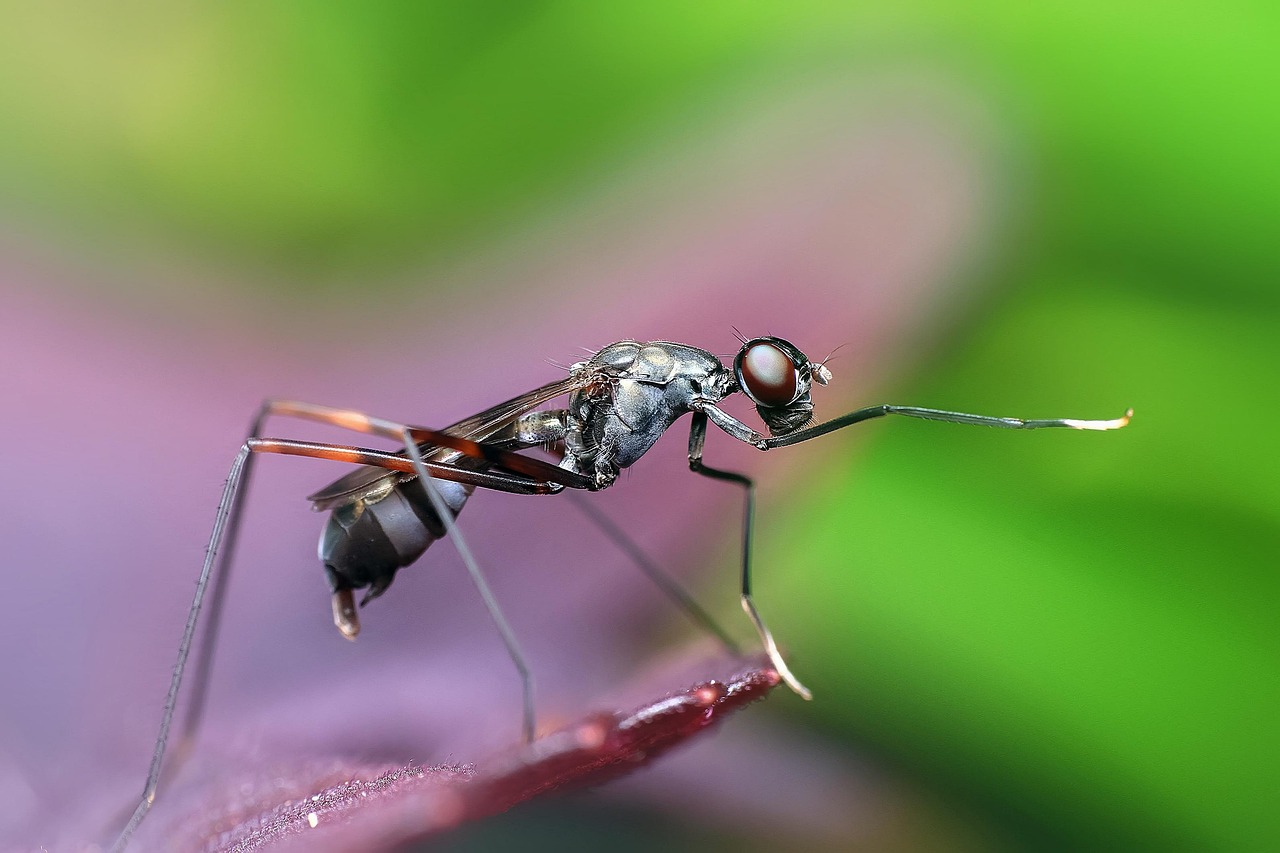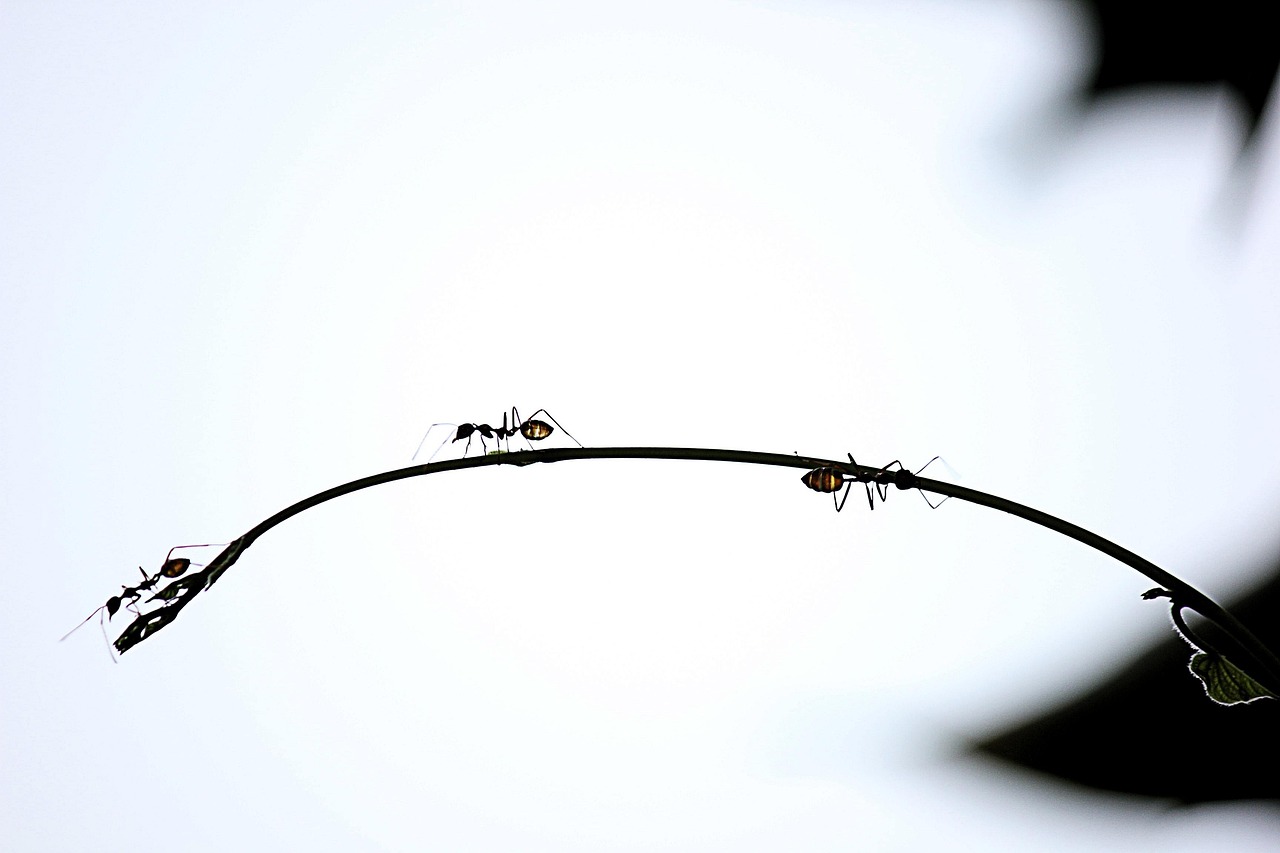Acacia trees and ants engage in a mutualistic relationship where both species benefit. Acacia provides food and shelter for ants, while ants protect the tree from herbivores and competing plants, ensuring its survival and growth.
The interaction between acacia trees and ants is a fascinating example of symbiosis in nature. This relationship showcases how two different species can evolve together, benefiting one another in a way that enhances their chances of survival. The acacia tree offers a unique habitat and resources that attract various ant species. In return, these ants play a crucial role in defending the tree against threats.
Acacia trees are primarily found in tropical and subtropical regions. They thrive in environments that may be harsh for other plants. Their unique adaptations not only allow them to survive but also to create a supportive ecosystem for ants. The trees produce extrafloral nectaries, which are specialized glands that secrete nectar. This sweet substance serves as a food source for ants. Additionally, acacia leaves and stems contain protein-rich structures called Beltian bodies, which provide essential nutrients.
Understanding the Acacia-Ant Relationship

The relationship between acacia trees and ants can be categorized as mutualism, where both parties gain benefits. This connection has evolved over millions of years, allowing both species to adapt and thrive together. The most studied species involved in this relationship is the Acacia cornigera, commonly known as the bullhorn acacia.
One of the key features of the bullhorn acacia is its hollow thorns. These thorns serve as a nesting site for ants, providing them with a safe refuge from predators. In exchange for shelter, the ants actively defend the tree against herbivores such as insects and larger animals that may attempt to feed on the leaves or bark.
In addition to protection, ants also help keep the area around the acacia free from competing vegetation. They do this by removing nearby plants that may pose a threat to the acacia’s growth. This behavior not only benefits the acacia but also ensures that the ants have a reliable food source by limiting competition.
| Feature | Acacia | Ants |
|---|---|---|
| Food Source | Provides nectar and Beltian bodies | Feed on nectar and Beltian bodies |
| Shelter | Offers hollow thorns for nesting | Use thorns as nesting sites |
| Defense Mechanism | Attracts ants for protection | Defend against herbivores and competitors |
This fascinating interplay between acacia trees and ants illustrates the complexity of ecological relationships. It highlights how certain traits have evolved to enhance mutual benefits. Understanding this relationship provides insights into broader ecological principles that govern interactions in nature.
Furthermore, studying these relationships sheds light on biodiversity and ecosystem stability. The presence of both acacia trees and their ant partners contributes to the overall health of their environment. This connection emphasizes the importance of preserving such relationships as they play a vital role in sustaining ecosystems worldwide.
Benefits of the Acacia-Ant Relationship
The symbiotic relationship between acacia trees and ants offers numerous benefits to both parties involved. Understanding these advantages provides insight into how such partnerships contribute to ecological balance and survival. Below are some of the key benefits of this relationship.
- Protection from Herbivores: Ants act as vigilant guards for acacia trees, defending them from a variety of herbivores, including insects and larger animals. This protection significantly reduces the risk of damage to the tree’s foliage and overall health.
- Reduction of Competition: By actively removing competing plants around the acacia, ants help ensure that the tree has sufficient access to sunlight and nutrients. This behavior promotes the tree’s growth and reproductive success.
- Nutrient Exchange: The relationship allows for nutrient cycling within the ecosystem. Ants contribute to the soil quality by breaking down organic matter and enhancing nutrient availability, which indirectly benefits the acacia tree.
- Increased Pollination: In some cases, ants may contribute to pollination activities by transporting pollen between flowers. While this is not their primary role, it can enhance the reproductive success of acacia trees.
Ecological Importance of Acacia Trees
Acacia trees play a vital role in their ecosystems beyond their interaction with ants. They contribute to biodiversity, soil health, and climate stability. Here are several ecological functions performed by acacia trees:
- Habitat Creation: Acacia trees provide habitat for various organisms, including birds, insects, and other wildlife. Their foliage serves as a nesting site and food source for many species.
- Soil Stabilization: The root systems of acacia trees help to bind soil together, reducing erosion and maintaining soil integrity. This function is particularly important in areas prone to desertification or heavy rainfall.
- Carbon Sequestration: Like many trees, acacias absorb carbon dioxide during photosynthesis, helping to mitigate climate change effects by storing carbon in their biomass.
- Water Management: Acacia trees influence local hydrology by regulating water flow and maintaining moisture levels in their environment. Their presence can enhance groundwater recharge.
Types of Ants Associated with Acacia Trees
Several ant species have developed a symbiotic relationship with acacia trees. Each species exhibits unique behaviors that contribute to the protection and maintenance of the trees. Some notable ant species include:
- Pseudomyrmex ferrugineus: Commonly known as the “bullhorn ant,” this species is particularly well-known for its relationship with bullhorn acacias. They occupy the hollow thorns and are highly aggressive in defending their host tree.
- Crematogaster spp: These ants are often found on various acacia species. They tend to have a more diverse diet and play a significant role in protecting against herbivores.
- Camponotus spp: Known as carpenter ants, some species of Camponotus also engage with acacias. They provide protection while nesting in the wood of the tree.
Adaptations of Acacia Trees for Ant Symbiosis
Acacia trees have evolved several adaptations that facilitate their symbiotic relationship with ants. These adaptations enhance the mutual benefits of the partnership. Some of these adaptations include:
- Extrafloral Nectaries: These specialized glands secrete nectar that attracts ants and other insects. The presence of these nectaries ensures a constant food supply for the ants.
- Beltian Bodies: As mentioned earlier, these protein-rich structures provide essential nutrients for ants, reinforcing their loyalty to the tree.
- Hollow Thorns: The development of hollow thorns not only provides shelter but also serves as a physical deterrent against potential herbivores, enhancing the tree’s defense mechanisms.
The intricate relationship between acacia trees and ants highlights the complexity of ecological interactions. As both species continue to adapt to their environments, they exemplify the power of mutualism in promoting biodiversity and sustaining ecosystems worldwide.

Threats to the Acacia-Ant Relationship
While the symbiotic relationship between acacia trees and ants is beneficial, it is not without its challenges. Various threats can disrupt or harm this delicate balance. Understanding these threats is crucial for conservation efforts and maintaining biodiversity.
Environmental Changes
Changes in the environment can significantly impact the acacia-ant relationship. Factors such as climate change, deforestation, and urbanization affect both species. Here are some key environmental threats:
- Climate Change: Rising temperatures and altered rainfall patterns can stress acacia trees, affecting their growth and ability to produce nectar. This, in turn, may lead to a decline in ant populations that rely on these resources.
- Habitat Loss: Deforestation for agriculture or urban development reduces the available habitat for both acacia trees and their associated ant species. This loss can lead to a diminished capacity for mutual support between the two.
- Pollution: The introduction of pollutants into the ecosystem can harm both acacia trees and ants. Chemicals such as pesticides can disrupt the ant populations that play a crucial role in protecting the trees.
Invasive Species
Invasive species pose another significant threat to the acacia-ant relationship. These species can outcompete native ants or herbivores, leading to imbalances in the ecosystem. Consider the following points:
- Displacement of Native Ants: Non-native ant species may invade areas inhabited by acacia trees. These invaders can compete for resources, ultimately displacing the native ant species that have a mutualistic relationship with the acacias.
- Herbivory Pressure: Invasive herbivores may not be deterred by the resident ant populations. If these herbivores are not targeted by the local ants, they can cause significant damage to the acacia trees.
Conservation Efforts
Given the importance of the acacia-ant relationship, various conservation efforts aim to protect these species and their habitats. Implementing effective strategies is essential for ensuring the longevity of this mutualistic interaction.
Protected Areas
Establishing protected areas is one of the primary methods for conserving both acacia trees and their associated ant species. These areas help preserve natural habitats and reduce human interference. Some important aspects include:
- Designated Reserves: Creating reserves specifically for acacia-dominated ecosystems ensures the protection of both flora and fauna within those habitats.
- Restoration Projects: Reforestation and restoration initiatives aim to rehabilitate degraded areas where acacia trees once thrived, reestablishing the conditions necessary for ants to return.
Public Awareness and Education
Raising public awareness about the significance of acacia trees and their ant partners is vital for conservation efforts. Educational initiatives can help foster appreciation and understanding among local communities. Key components include:
- Community Engagement: Involving local communities in conservation programs encourages stewardship and promotes sustainable practices that benefit both acacia trees and ants.
- Research Initiatives: Supporting scientific research on the ecology of acacia-ant relationships contributes to a better understanding of their needs and vulnerabilities, informing effective conservation strategies.
The Future of Acacia-Ant Relationships

The future of acacia trees and their ant partners depends on how we address existing threats and implement conservation measures. By prioritizing ecological integrity and fostering healthy ecosystems, we can hope to sustain this remarkable symbiotic relationship for generations to come.
As our understanding of these complex interactions deepens, it becomes increasingly clear that protecting such relationships is essential for maintaining biodiversity on our planet. The continued study of acacia trees and ants will unveil further insights into their roles within broader ecological systems.
Implications for Biodiversity and Ecosystem Health
The relationship between acacia trees and ants extends beyond their individual survival. It plays a vital role in supporting broader biodiversity and maintaining ecosystem health. The mutualistic interaction can have cascading effects throughout the ecosystem, influencing a variety of species and ecological processes. Here are some key implications:
- Biodiversity Support: The presence of acacia trees creates habitats for numerous organisms, including birds, insects, and mammals. By supporting ant populations, acacias indirectly help maintain a diverse array of species that depend on these trees for food and shelter.
- Soil Health: The activities of ants, such as aerating the soil and breaking down organic matter, contribute to soil fertility. Healthy soil is essential for plant growth and overall ecosystem productivity, benefiting not only acacia trees but also other flora.
- Food Web Dynamics: The acacia-ant relationship is integral to local food webs. Ants protect acacia trees while also serving as prey for various predators. This dynamic interaction contributes to the stability and resilience of the ecosystem.
Research Directions and Future Studies

As we continue to explore the acacia-ant relationship, future research could focus on several areas to enhance our understanding:
- Longitudinal Studies: Conducting long-term studies on the dynamics of the acacia-ant relationship can reveal how environmental changes affect their interactions over time. Such studies can help identify trends and predict potential challenges.
- Genetic Studies: Investigating the genetic diversity of both acacia trees and their associated ant species may provide insights into their adaptability to changing environments. Understanding genetic variations can aid in conservation efforts.
- Interactions with Other Species: Exploring how acacia trees and ants interact with other plant and animal species can provide a holistic view of their ecological role. This research can uncover complex interdependencies within the ecosystem.
Challenges in Conservation
While efforts to conserve acacia trees and their ant partners are crucial, several challenges persist:
- Lack of Awareness: Many people are unaware of the significance of mutualistic relationships like that of acacia trees and ants. Increasing public knowledge is essential for garnering support for conservation initiatives.
- Funding Limitations: Conservation projects often face financial constraints. Securing funding for research and habitat protection is critical for effective conservation efforts.
- Policy Implementation: Environmental policies must prioritize preserving mutualistic relationships within ecosystems. Ensuring effective implementation of these policies can be challenging amidst competing interests.
Final Thoughts
The symbiotic relationship between acacia trees and ants exemplifies the intricate connections that exist within ecosystems. It showcases how cooperation between different species can lead to enhanced survival and environmental stability. By understanding and appreciating this relationship, we can better recognize the importance of conserving both acacia trees and their ant partners.
As we face increasing environmental challenges, it becomes imperative to prioritize strategies that support biodiversity and ecological health. Through concerted conservation efforts, education, and research, we can work towards a sustainable future where such essential relationships continue to thrive. Preserving these interactions not only benefits individual species but also fosters resilience within entire ecosystems, ensuring that they remain vibrant and diverse for generations to come.
This exploration into the world of acacia trees and ants serves as a reminder of the interconnectedness of life on our planet. Every species plays a role in maintaining the balance of nature, highlighting the need for stewardship and responsible management of our natural resources.
